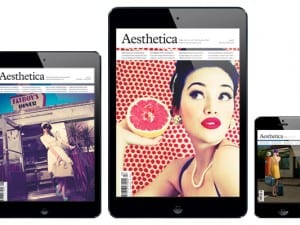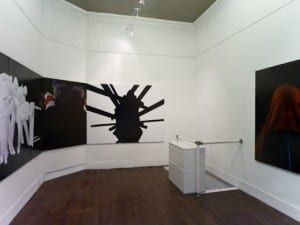“In the Middle East ramshackle cities grow without stopping, while prestige building projects are constructed on an inhuman scale as displays of power.” These are the words found below Modern Times: A history of the machine (2010-2012), an animated piece by Mounir Fatmi – one of the ten shortlisted artists showing at the V&A as part of the Jameel Prize exhibition. Fatmi’s observation is strikingly accurate. Within a presentation formed to celebrate Islamic creativity, he acknowledges the prevalence of a tawdry creative world often lacking in depth.
It is in the light of this that the Jameel Prize holds such an important place as an exhibition. From high profile prestige projects, development is too often confused with culture and, when interpreting the former, the default image is that of large-scale architecture by internationally renowned practices; usually within the Middle East.
Whilst internationally renowned, these creative bodies are likely to be outsiders in their observation of Islamic culture and yet they create such bold manifestations of what contemporary Islamic society appears to suggest itself to be. The Jameel Prize is a delightful antidote to any notions of poor taste and bad judgement attempting to taint the validity of Islamic culture, visual or otherwise.
The entries narrowed to a shortlist of ten artists and designers from which we are presented with a variety, depth and authenticity that is a joy to see. This shortlist represents only a handful of the hundreds invited to submit work under the recognition of it being ‘contemporary art and design inspired by Islamic tradition’. This uniting factor is easily seen to be just that – uniting – as upon closer inspection the artists are found to be of hugely diverse backgrounds living and working in liberal Europe to the conservative Saudi Arabia. A plurality that defies any preconceived and naive assumptions of Islamic society and culture.
Visually, the work here speaks strongly of the Islamic world, often deeply rooted in historic reference. It is inherently unfamiliar in comparison to the artistic conventions used throughout the west that are both more frequently encountered and perhaps more easily responded to, but, this content is delivered through a common relative, media. An exciting collection with the romance and colour of the unexpected is created through creative typologies we all find ourselves familiar with, those such as moving image, sculpture and craft. They are typologies expressed in a wholly different way. Twins, separated and raised within different families.
This collection of diverse pieces stands as an ambassador to Islamic culture, however, this is first and foremost a competition and they deserve to be assessed in their own right…as design. With a judging panel including (among others) designer Thomas Heatherwick and the director of the V&A Martin Roth, this is assured to have been the case. Nada Debs’ is one of the shortlisted creatives and her sculpted concrete carpet of 26 sections, each exploring an individual character of the Arabic alphabet, sits to the centre of the room. The Arabic text in relief and the featured character of each highlighted with mother of pearl inlay is a graceful unity between the minimalist silence of simply formed industrial concrete and the decadent lustre of Mother of Pearl.
In contrast, French born Florie Salnot presents a particularly memorable piece. As if the superficial beauty of her delicate jewellery designs were not impressive enough, the process through which they came to be is revealed to be all the more beautiful. Upon further reading one quickly finds that these are not a design for jewellery but a design for identity. Working with refugees displaced from communities often defined by their craft she creates beauty from nothing. The jewellery having been made from little more than thinly cut plastic bottles, hot sand, spray paint and time. To those who had next to nothing, she would give back to them an important part of their culture and identity, their craft.
It was the competition that stands clearly as the winner. It manages to bring together a wonderfully varied collection of creative endeavours, all of such fantastic quality that you cannot help but be taken in by the depth of finishes and concepts offered to you.
Andrew Herbert
The Jameel Prize 3 exhibition runs until 21 April at the V&A, South Kensington, Cromwell Road, London, SW7 2RL. For more information visit www.vam.ac.uk.
Credits
1. Modern Times: A History of the Machine (Detail, 2010–12, (Video, Mounir Fatmi, 1 MB, Courtesy of the artist and Shoshana Wayne Gallery, Photo: Mounir Fatmi.





